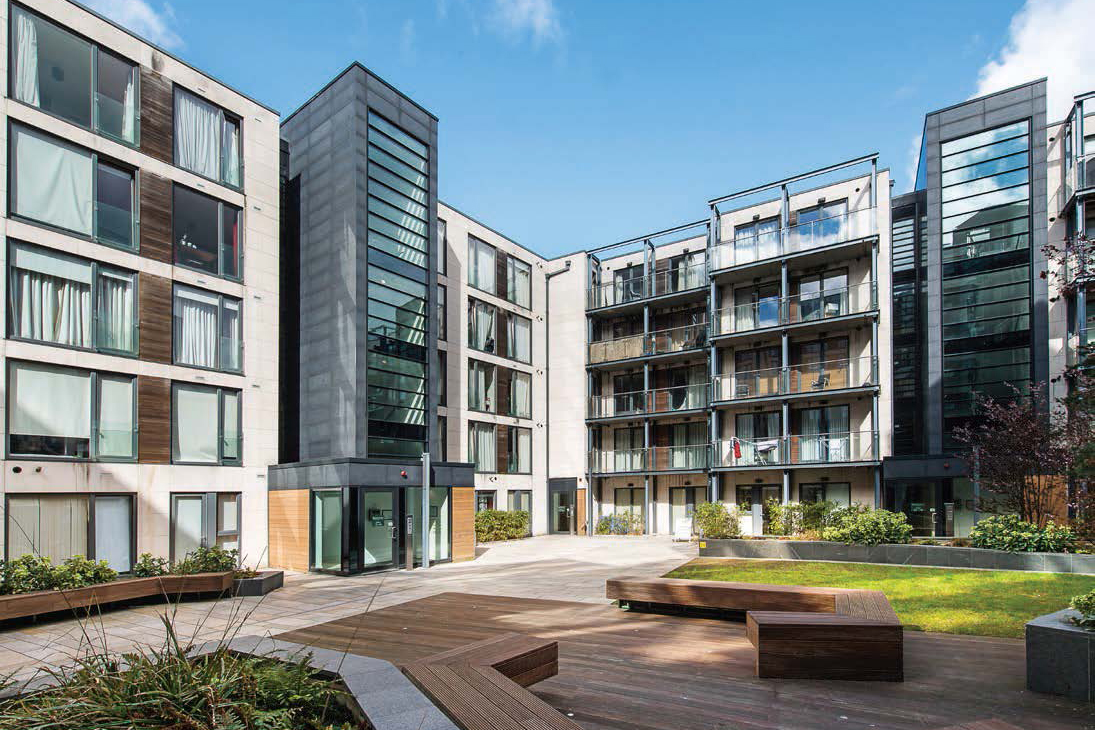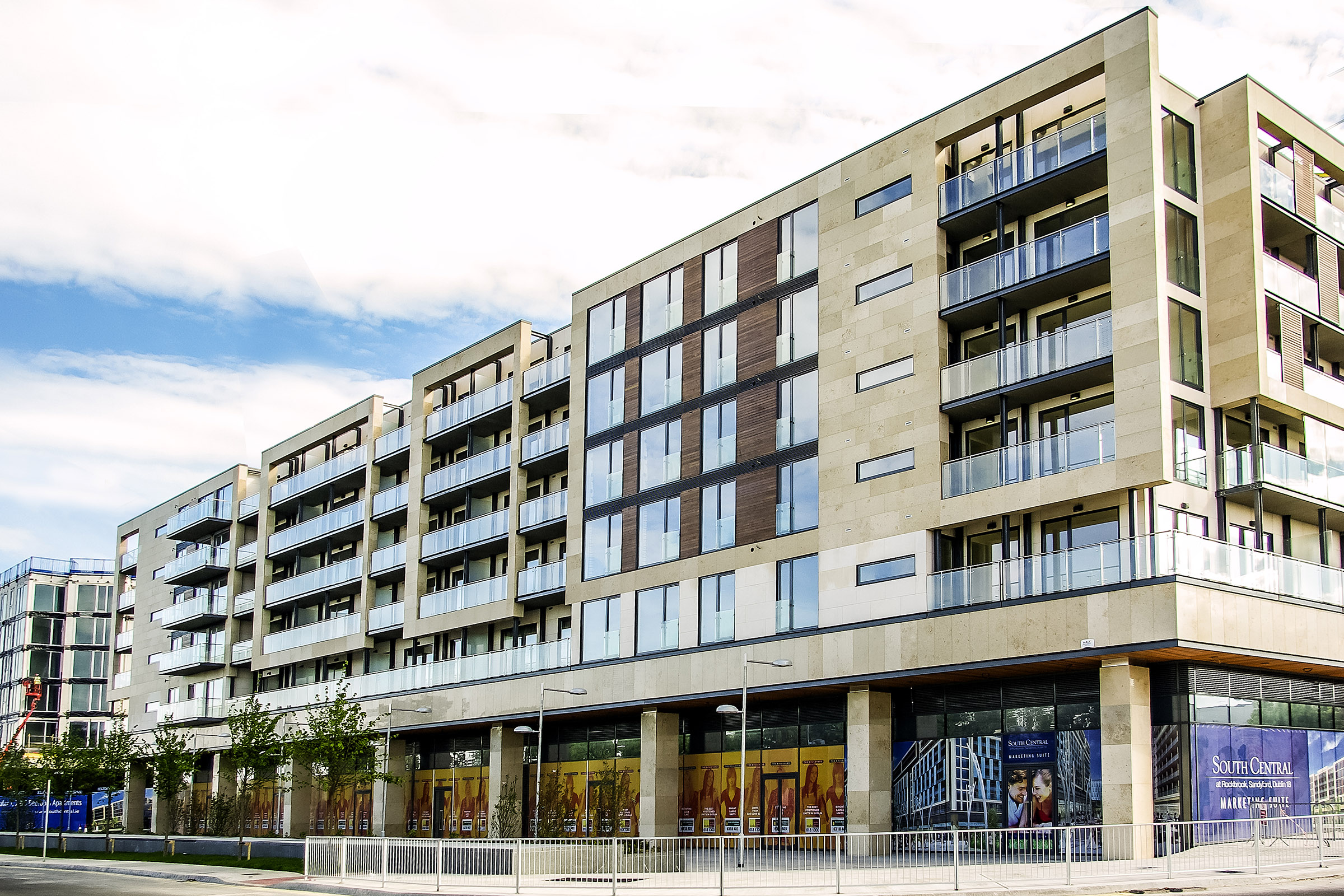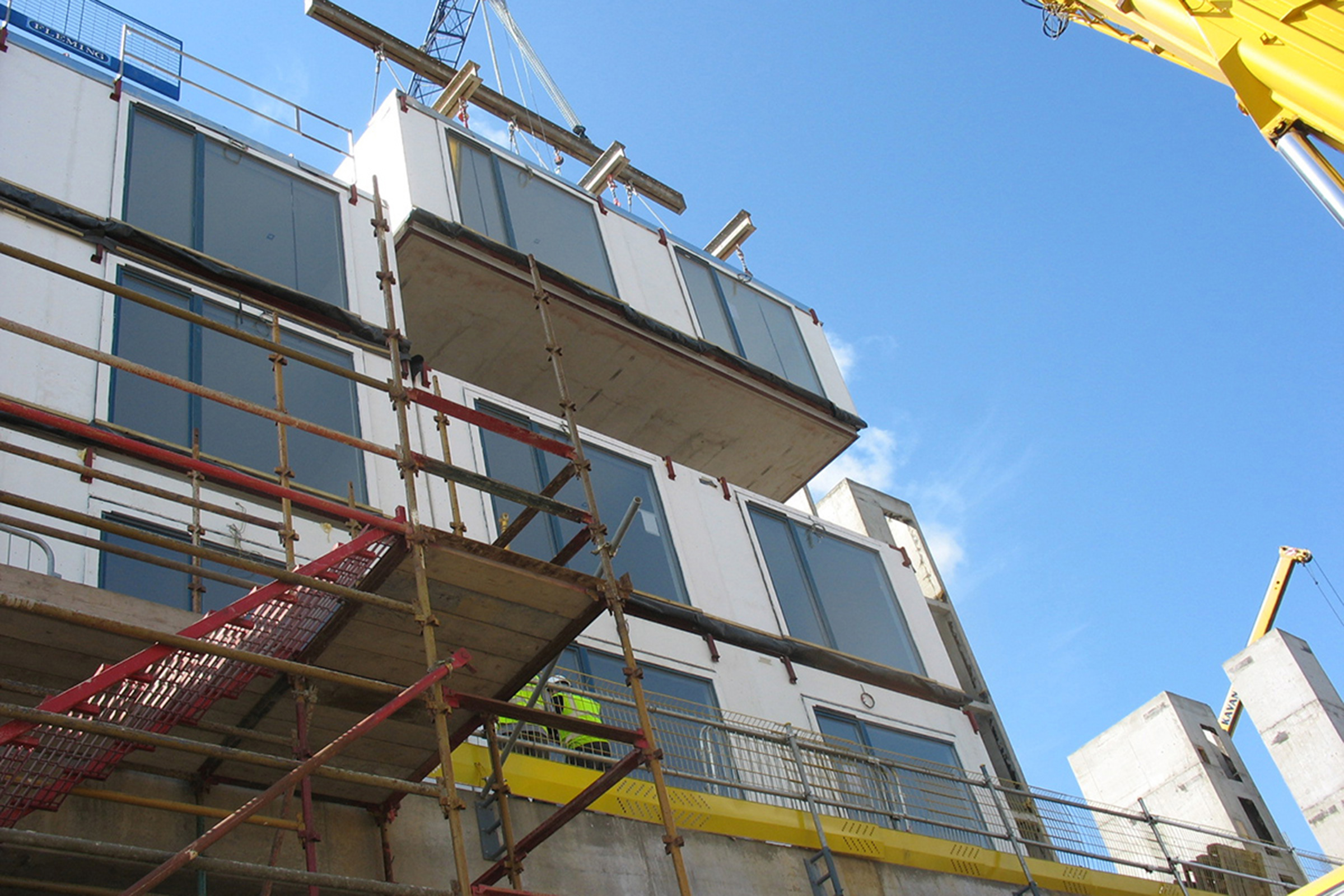Service
Architecture, Engineering, Masterplanning, PM/CM
Sector
Life, Live, Mix, Play
Location
Dublin, Ireland
Rockbrook was a landmark in Dublin’s urban transformation, redefining the Sandyford Industrial Estate as a new residential and commercial district.

Completed in 2009, the £200 million development spans 157,935 m² and provides a new urban quarter of 1,300 apartments, 40 live–work units, 20,000 m² of office space, and 25,000 m² of retail, supported by extensive basement parking. Conceived as a series of urban blocks with landscaped courtyards, the scheme includes a 14-storey residential tower and a 17-storey office building, creating density and identity at a pivotal location along the Luas line. Its defining achievement, however, was pioneering the use of volumetric modular construction at a scale not seen before in Europe. Rockbrook challenged preconceptions about prefabrication by delivering architectural richness and diversity through MMC, demonstrating how modular systems could support high-density, high-quality urban living.
Urban Regeneration & Masterplanning
Rockbrook sits at the heart of the Sandyford Urban Framework Plan, which guided the transition from low-rise industrial uses to a vibrant mixed-use centre. HKR’s masterplan organised the development into a series of courtyards, linked by a new pedestrian street that connects directly to the Luas light rail. This urban grain provides permeability, amenity, and a coherent identity, establishing Rockbrook as both a destination and a neighbourhood. The scheme accommodates more than 2,000 residents alongside workplaces and retail, creating a balanced, sustainable community.

Innovation in Modular Construction
Rockbrook is believed to have been the largest residential prefabrication project in Europe at the time of its construction. Working with Fleming Construction and their offsite division, Vision, HKR adapted the modular system for a high-density urban setting, a context in which MMC was rarely applied. Each apartment was formed from factory-built modules, fully fitted with kitchens, bathrooms, plumbing, and finishes, delivered to site for rapid assembly. This approach offered significant benefits: reduced programme length, lower costs, improved safety, less waste, and higher factory-controlled quality. Importantly, HKR ensured the system delivered architectural variety and richness, avoiding the monotony often associated with prefabrication.
Construction
Rockbrook demonstrated the potential of MMC at scale, redefining perceptions of modular construction and establishing a new benchmark for residential-led urban regeneration. As both a community and a construction milestone, it illustrates HKR’s ability to combineinnovative methods with masterplanning vision to deliver transformative city-making projects.




